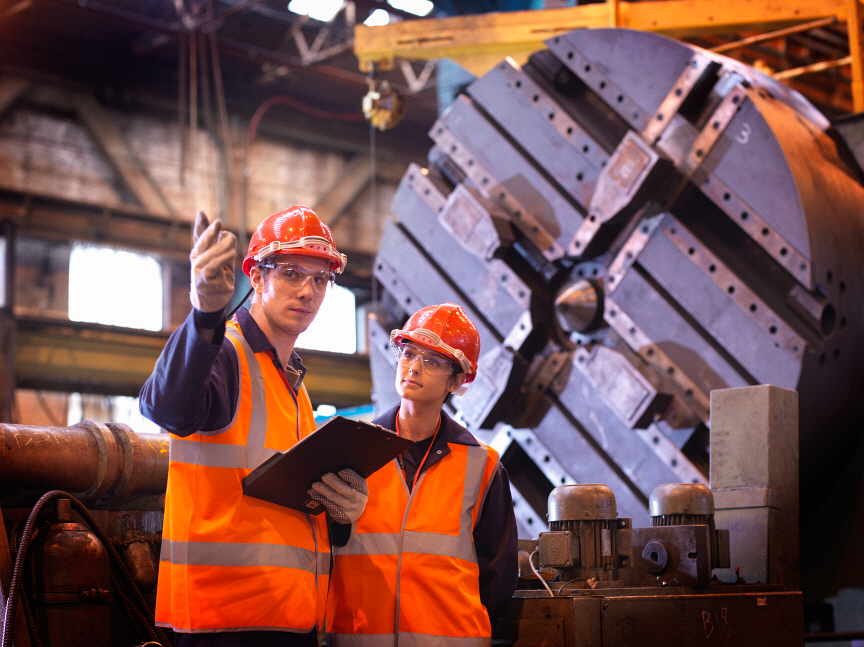The manufacturing industry life cycle reflects smooth and uninterrupted coordination between various components such as sales, production, supplies, workforce, and safety. However, the coronavirus pandemic has created a tsunamic impact on the resilience of the manufacturing ecosystem, which will face financial and operational challenges at least in the near future.
Based on a recent forecast by Interact Analysis[1], the global manufacturing output will fall by 7.6% in 2020, with the manufacturing sectors in the US, the UK, Italy, India and Brazil expected to be the worst affected, and South Korea and China being the least affected.
However, this crisis has given rise to opportunities for the manufacturers across different segments to re-innovate and transform their business strategies, to become more resilient and future-ready. In fact, a recent McKinsey survey[2] of manufacturing and supply-chain professionals found that 93% plan to focus on resilience of their supply chain, and 90% plan to invest in talent for digitization.
Key Strategies for Resilience Building
It is essential for businesses to aggressively adopt strategies that enable optimal utilization of resources, scenario planning, people management and welfare. In simpler words…. invest smartly towards building resilience.
Here are some of key strategies that the manufacturing industry can evaluate:
I. Managing the supply chain disruptions
A recent research report by Mckinsey[3] stated that on an average, companies across industries are expected to experience supply chain disruptions lasting a month or longer, every 3.7 years. This call for the need to reimagine the current supply chains from design to production to delivery. The manufacturers need to keep a close tab on their suppliers across various supply chain levels to ensure resource capacities are not drastically impacted due to unprecedented crisis situations. ‘Know your Supplier’ is the key word here.
Another important aspect to be considered here is undertaking a vulnerability analysis to spread out the risks of overdependence on small set of suppliers. This entails creating a balance between local and global suppliers to ensure a wide-spread sourcing alternative.
By developing business contingency plans that promote ‘planning and creating anywhere, everywhere’ approach, businesses can establish an environment that is adaptive in real-time by shifting the location of production without suffering major loss in capacity or product quality.
Further, it is critical for manufacturing and supply-chain organizations to become more agile and resilient by adopting new-age technological solutions that can help in developing operational scenarios, tracking changes in supplier networks, aid in changing economics of production, and so on.
II. Maintaining adequate liquidity and cash flows
Today, for a business to survive, liquidity is the key. Manufacturers need to understand and be able to forecast their working capital requirements for addressing immediate day to day needs as well as for months ahead. This entails controlling their discretionary spending, maintaining uncommitted credit and appraising and collaborating with the suppliers and customers, and keeping the lenders and financiers in the loop regarding the business’ credit lines to ensure consistent and timely flow of cash.
III. Sustaining healthy human capital
With uncertainties surrounding the longevity and cure of this virus, labour-intensive sectors such as textiles, real-estate, printing, and many others, within the manufacturing industry are experiencing reductions in their non-contractual, wage-earning workforce.
A hard reset of the existing human resource strategies is critical. Companies need to assess and analyse the impact of workforce reduction on their operational outcomes. Manufacturers must keep the communication lines open and transparent regarding any corporate changes and other major key developments impacting the business environment, from regulatory changes to technology adoption. Moreover, the on-ground realities are best known by the resources on the floor, therefore, companies must actively involve them in developing plans for improving process efficiencies and cost reductions. Lastly, it is imperative to have well-established policies and checks on the health safety and security norms to curb the spread of the pandemic to build employee engagement and resilience in the new normal way of working.
IV. Changing external environments
To build a cohesive resilience strategy, the manufacturing companies need to keep a close tab on the pandemic-induced economic and business rules and regulations. Governments’ reaction to a crisis of this magnitude can lead to major changes in areas of currency exchange rates, oil and energy prices, financial loans, taxation policies, corporate restructurings, and much more. Thus, it is vital for manufacturers to monitor these alternations, evaluate the resultant impact on the organization’s financial reserves, compliance polices and overall corporate goals.
V. Leveraging Industry 4.0 solutions:
The disruptions in cash flows, work environments, inventory and logistics, and sudden changes in consumer needs, have propelled the role of digital transformation and Industry 4.0 from a ‘good to have’ to a ‘must-have’. So while earlier the Industry 4.0 solutions were slowly penetrating into the different layers of the manufacturing operations, the pandemic has fast-tracked its adoption as a key enabler for business sustainability and resilience.
As more and more companies are undergoing digital transformation, Industry 4.0 is experiencing a paradigm shift from a factory-focused project to an all-encompassing business strategy. It stands on a scaffolding of four major technologies[4] including connectivity, data and computational power (Internet of Things (IoT), Cloud, Blockchain, sensors); analytics & intelligence (Artificial Intelligence (AI), Machine Learning (ML), advanced analytics); human-machine interaction (robotic automation process, Augmented/Virtual Reality (AR/VR), chatbots); and advanced engineering (3D printing, nanoparticles).
Furthermore, automation through smart technologies such as IoT, AI, and edge computing can enable a digital mirror of the organization’s supply chain. This can help in improving and automating production lines, keeping a track of raw and final products across the entire logistics gird, reducing supply chain costs while enhancing customer service levels at the same time, and so much more. Case in point, SAP’s manufacturing software and Industrial Internet of Things (IIoT) solutions[5] provide services like data analytics, automation, integrated manufacturing operations, defects tracking and resolutions, energy monitoring and analysis, equipment effectiveness, amongst others.
Operational planning, productivity and performance management, asset utilization and efficiency and quality management are some of the prominent areas where digital tools such as machine-vision algorithms, wearable devices, automated equipment-monitoring and process-control systems are being actively adopted.
Way forward…
As the manufacturing industry begins to reopen its doors in the new normal, it has a unique opportunity to reimagine a digitized and resilient future, built on strong pillars of Industry 4.0 transformation in line with the players’ business ecosystems and their strategic goals.








